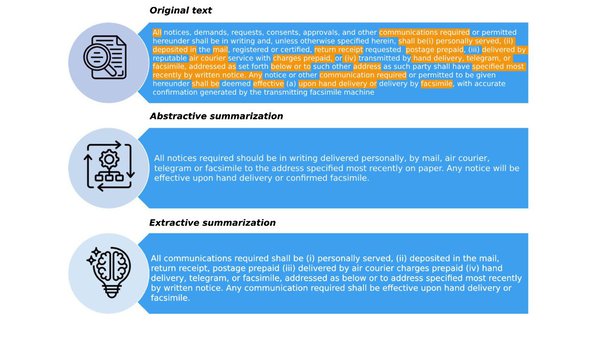

The legal industry has seen remarkable advancements in recent years, particularly with the evolution of LegalTech, a term coined to describe the intersection of technology and the legal sector. Moreover, this shift has undergone a profound transformation after the integration of Artificial Intelligence (AI) into the core operations of the legal industry. Our article explores the significant impact of AI in LegalTech and how it is reshaping the legal landscape.
Legal professionals can be described as both creative and demanding problem solvers always in search of optimal solutions. They are trained to maintain a balance between satisfying their client’s goals and keeping in line with legal regulations. One trending question in the industry revolves around whether jurisprudence should be considered a humanity or a science.
Delving into the complexity of this question, it’s evident that the study of law requires a deep understanding of logic, as a legal professional learns the “source code” of the rules of society and applies it to various situations accordingly. However, the logic of law is also subject to human interpretation and involves emotional concepts like perceived justice and mercy.
Considering these nuances, it is logical that traditional computer software excels in handling the “science” component, while the human aspect of law may still be a bit challenging for a machine to understand and practice. Nevertheless, we can’t help but agree that AI is revolutionizing the way legal professionals work, automating routine tasks, enhancing legal research, and improving decision-making processes.
The early 2000s marked the beginning of the LegalTech era, a transformative period that revolutionized the legal industry through the integration of technology and innovative solutions.
As advanced computing power, cloud-based services, and the growing use of digital processes became more common, legal professionals experienced a significant change in how they worked. The term LegalTech, covering various technologies designed for the legal field, played a key role in making work processes smoother, improving teamwork, and making legal information more accessible. Thus, the legal world saw a big shift, embracing technologies like document automation, e-discovery platforms, and more.
The early 2000s not only marked the beginning of the LegalTech era but also laid the foundation for a dynamic and tech-savvy future for the legal profession. In 2023, the global LegalTech market was valued at 29.66 billion U.S. dollars, which is set to increase in the coming years reaching 35.6 billion U.S. dollars in 2027.
Additionally, investors look very fondly upon LegalTech startup companies. In 2021, the LegalTech startup market generated 5.4 billion U.S. dollars. Experts predict that it will keep growing to register an annual growth rate (CAGR) of 3.7 percent until 2027. By the end of that period, the revenues are expected to reach a substantial 6.7 billion U.S. dollars. These numbers highlight the massive interest and optimistic perspective of investors in this sector.
AI goes beyond mere buzzwords or hype. It’s a reality already transforming what humans can do, accomplishing tasks faster, cheaper, and better. A recent survey by scholars from Princeton University, the University of Pennsylvania, and New York University, highlights that “legal services” is the industry that faces the most impact from the AI. Another report by economists from Goldman Sachs states that automation could replace 44 percent of legal work with only office and administrative support jobs having a higher percentage at 46 percent.
Attorneys often express the idea that the majority of their work seems “drudge-like and almost mechanical”. While there is no shortage of rewarding challenges, there’s a lot of repetition. It goes without saying, that automation in this case is an appealing choice. Besides, AI differs from traditional approaches, as the AI algorithm learns by example and then generalizes its observations, hence tackling more complex tasks. For instance, AI can understand the subtleties of legal texts in ways that traditional computing cannot.
When considering the automation of legal tasks, a pivotal step involves identifying the areas where AI can be most effective. To dive deep into the importance of AI in LegalTech, let’s examine its two closely linked components that play crucial roles in the industry: Natural Language Processing (NLP) and machine learning (ML).
NLP is the core technology behind the AI system. It can be considered as a subdivision of AL that deals with the interaction between algorithms and written or spoken human language. Below, we will explore its key benefits and functions. What different companies look for, or what their vendors do for them, varies, but the underlying process is the same in each case.
Finding the right details is essential to correctly lead and win a case. Legal research systems have existed for decades now, but before AI, their usage was merely limited to keyword/tag search.
In countries with common law (like the USA) finding a very similar case from the past often determines the outcome of a current one. As mentioned, in the past, keyword/tag search has been used to help speed up this process. However, during this process, the nuances in wording can lead to several issues, as descriptions in cases may differ from the lawyer’s search terms. Thus, lawyers need to go through hundreds of cases in a very limited time to find an applicable example.
Additionally, in countries with civil law, researchers not only seek relevant cases but also applicable legal clauses and paragraphs (from a national constitution or international, European legislature) making the research process even more complex and time-consuming. We can’t but agree, that keyword search tools aren’t enough.
This is where NLP takes center stage. Legal research through NLP generates results by retrieving key information through the identification and separation of relevant documents from a larger pool. Therefore, there is no need to formulate an extremely precise search to get the desired information. Through AL techniques, lawyers can search using their natural language, similar to asking a colleague the same question in person. This approach helps automate the procedure and saves review time.
NLP searches through unstructured text to extract valuable information. This can be seen in contract management departments, where NLP extracts key terms from contracts to create summary reports. The use of NLP for legal research can also be seen in intellectual property law, where key data such as names of parties, case outcomes, and patents are being extracted from court records. Again, this data is then used to create summary reports that assist lawyers in developing strategies to win intellectual property infringement cases. Through NLP, drafting reports and identifying key terms is completely automated, which eliminates the risk of any human error such as entering the wrong date, missing an important contractual clause, or any general spelling and grammar mistakes.
NLP saves time for lawyers by identifying where specific phrases are mentioned in a lengthy document or exactly where a decision is made in the judgment of a case. This efficiency enables lawyers to easily find what is relevant to their work without wasting time reading every page and reducing the risk of overlooking crucial details. Tasks such as going through case files can be tedious and quite time-consuming. Instead of going through hundreds of documents from top to bottom, NLP will prioritize the ones that are more likely to fit the criteria.
For easier, more common lawsuit documents, the system is also able to list arguments that are likely to be used by the opposite side (together with counterarguments for them). It can also classify which arguments from your side are strong, and which are likely to be destroyed by the opponent, offering an automated strategy for argument selection.
Therefore, using NLP saves lawyers time and enables them to allocate their time to more complicated tasks that cannot be automated or assisted by technology.
The importance of wording when drafting legal documents and contracts is undeniable. Therefore, the way a lawyer structures and drafts a contract requires extreme precision. Any vagueness in wording can significantly influence how clauses are interpreted, thereby affecting the client’s position and bargaining power. NLP eliminates any errors in wording, which adds another layer of protection to the client’s reputation and position in a negotiation.
NLP features within contract management software can also translate legal documents into multiple languages. This feature enables law firms to have a global reach and connect with clients across various regions. Using NLP to translate documents instead of hiring a translator for every language has the added benefit of reducing costs for many companies.
With NLP, it is possible to identify any shady illegal wording that could void the clause in a contract even if the wording is particularly sneaky. This capability helps save law firms money by accurately detecting risky clauses before the document is signed.
In certain jurisdictions (especially in continental Europe) certain legal clauses are forbidden by law. If a company incorporates these clauses into a contract, it may face legal consequences, including a potential fine and the clause being declared void. These are usually sentences forcing one side of the contract to do something against the law or making one of the sides not responsible for not delivering/providing what was agreed to. It’s not a surprise that these messy tricks are used, for example, by companies offering quick cash loans for the poor or other schemes.
To protect themselves from being taken to court, they use clauses that have slightly different wording than terms that are included on the “forbidden list”, but with the same meaning and power. In these cases, the process of identification is even more mundane, but – yet again – NLP can detect them by understanding the real meaning of a sentence, even if the wording is different.
Understandably, using NLP to detect these clauses doesn’t necessarily mean protection and easier legal help for the poor, but it does mean a lot of potential savings for enterprises. Not because of the “forbidden clauses”, but due to accurate detection mechanisms and warnings about risky clauses. Everyone who has been in business for more than a minute knows how important detecting risky clauses is, and from the technical, AI point of view, the mechanism remains the same.
Every attorney knows that the process of contract review is time-consuming. One of the tasks performed by a legal representative is extracting or highlighting useful information, such as looking for dates or deadlines and putting them in Google Calendar, classifying document types (lease agreement, NDA, contract development agreement, etc), researching locations of the party and counterparty, understanding payment terms, renewal, etc.
Do you have IT recruitment needs?
During this process, the text is automatically read and split into paragraphs and sequences. The encoding approach is implemented to retrieve the most relevant content from each paragraph. The result of the encoding operation is a compressed representation of the document.
OCR is an essential factor for text processing. It enables transforming printed or scanned documents, as well as photos of them, into machine-encoded text that is easy to process. The quality of the OCR used to be a problem in the past. Some characters used to be misrecognized, but things have changed. Nowadays OCR devices are common, accurate, and used at scale – everything that is necessary to transform the image of a text into actual text in a digital form.
RNNs and CNNs are two prominent artificial neural networks widely used in ML and deep learning applications. RNNs are designed to process sequential data and CNNs excel in image and spatial data analysis. With the help of these models, the classification process of legal contracts becomes more effective.
NER is a technique that helps to extract information about people involved, facilities/properties, companies and institutions involved, as well as locations, dates, regulations referenced, etc. Such extraction makes it possible to quickly search through tons of documents.
Report generation is a process where a short executive summary is created and sent to the user along with the original document. Don’t miss out on reading more details about creating contract summaries below.
As discussed above with the help of AI a lengthy contract can be summarized and presented in a form similar to an executive summary, including the most important information only and getting rid of any excess text. For example, it can define:
With all this information, AI can create an executive or ready-to-read summary that provides instant context for legal professionals. There are two main approaches to achieving this: extractive and abstractive. The chart below displays the difference between the two.

Extractive summarization aims to extract the most relevant terms/words from a longer document (the extracted words are marked in orange). Abstractive summarization, on the other hand, aims to generate a new paragraph, word by word, that is shorter and has the same meaning. To do that, it often uses words that did not appear in the original document.
Moreover, when there is a need to summarize whole documents a more sophisticated technique is employed, using both abstractive and extractive summarization. The algorithm receives a long document, and it immediately extracts a lot of potentially interesting terms from many clauses. It emphasizes named entities, ensuring no important bodies are skipped. Then, using deep neural networks it creates an abstract summary of the whole document.
Such a summary can be much shorter than the source. Often it is 5% of the length of the contract. Still, it preserves the most important information and is easy to understand even if the reader needs to be provided with the main document.
Thanks to these solutions described above, legal departments can review documents faster, in a more accurate way, and therefore build a more efficient, cost-effective process of extracting information from their databases.
Due diligence in M&A transactions often involves extensive legal analysis, making it challenging for legal teams to manually review large volumes of documents within tight timeframes. As a result, law firms have to hire extra hands just to help with the massive amounts of research.
Luckily, with the help of NLP and ML algorithms, it’s possible to automatically identify potential red flags or unusual content in legal documents. The method to achieve this is called “anomaly detection”. The method utilizes modern NLP techniques to extract meaningful representations of text that can be understood by ML algorithms. Such extraction is often called “encoding”. Encoding represents a clause (or a document, or a sentence) as a vector of numbers, for example [-0.2, -0.4, -0.4, 1, 2] (in reality these vectors are much longer). A single vector does not have any particular meaning. However, if the vector is encoded properly, clauses with similar meanings will have similar vectors. The more clauses are used, the more precise the encoding can be. This algorithm has two large benefits:
In this method, it is a common practice to include contracts stored on databases such as Edgar. After obtaining a vector representation of all the sections about the limitation of liability, classic anomaly detection techniques like isolation forests, one-class SVMs, etc, are applied. These techniques help to identify clauses that stand out from the others or have a different writing style among the limitation of liability clauses.
The competitive advantage of having such a system is huge. First of all, any documents that would have been omitted without the ML system will now be checked by the algorithms. Since potential red flags represent only a small percentage of paragraphs, the extra workload placed on the team is minimal. On the other hand, the probability of skipping a risky document is greatly reduced.
There are also additional ways to improve the due diligence process using AI. An attorney might want to discover documents similar to the one that has already grabbed his attention. Conversely, if a document seems irrelevant, the attorney might be encouraged to skip similar contracts. Below, we discuss two methods worth taking into account:
Clustering – contracts can be organized into groups or clusters. Each cluster contains only documents with a specific theme. As the attorney reviews a contract, the software recommends what to read next from the relevant cluster. If a document appears uninteresting, similar ones can be excluded from the unread documents set.
Classification – the attorney selects more than one document. This information is used to create a relevance ranking. Using such a system is called “Predictive coding” in the legal field. Let’s discuss what it is and how it works.
Predictive coding is a software-driven process designed to identify relevant documents in a specific legal case or study. In a hypothetical scenario, where a client is sued, and a substantial amount of money is on the line, a law firm may offer support by covering the costs and requesting a percentage (X%) of the stake as compensation. However, the law firm needs to assess the risks and the likelihood of winning the case before committing to such an arrangement. The faster and more efficiently this assessment can be made, the greater the number of cases the firm can handle. You may wonder how predictive coding achieves this.
The initial step involves employing advanced legal research methods, as previously outlined. By leveraging NLP and AI it is possible to identify related cases and relevant clauses. Once these related cases are pinpointed, the researcher, working collaboratively with AI, can make a more accurate estimation of the chances of winning the case.
The biggest advantage of predictive coding is the increase in the number of relevant documents found. It helps in browsing an arbitrary number of documents and suggesting which should be manually reviewed by a lawyer. The combination of ML processing power and the attorney’s experience minimizes the time needed for the correct evaluation of a case.
The year 2022 marked a significant milestone in the digital landscape, as OpenAI launched ChatGPT. It quickly became one of the fastest-growing applications in history, boasting over 100 million monthly users by February 2023. Since then, generative AI has been adopted by businesses across the globe, with professionals in various fields applying it in some way or another. The legal industry was not an exception. For legal professionals, the impact has been nothing short of transformative. According to our recent Tech GC Report, an astonishing 55 percent of legal professionals either currently utilize generative AI or have plans to incorporate it into their workflow.
There is no doubt that LegalTech is continuing to evolve and ChatGPT stands at the forefront, revolutionizing the way legal professionals work and setting the stage for a new standard in legal innovation.
“Legal teams who successfully harness the power of generative AI will have a material competitive advantage over those who don’t.”
While AI has the potential to significantly impact the legal industry, it is unlikely to completely replace attorneys in the foreseeable future. AI technologies, such as NLP and ML, can assist lawyers in various tasks, including legal research, document review, and contract analysis. These tools can increase efficiency, reduce costs, and help lawyers focus on more complex and strategic aspects of their work. Thus, AI can save time and money in the process, but a review from a more experienced lawyer will always be necessary to spot potential inconsistencies and inaccuracies.
The world of legal services is full of different types of documents. The technology is there to make working with them easier and faster. Embracing advanced technologies not only enhances efficiency but also positions legal practitioners to navigate the complexities of their field with greater ease and agility.
Frequently asked questions (FAQ)
DevsData – your premium technology partner
DevsData is a boutique tech recruitment and software agency. Develop your software project with veteran engineers or scale up an in-house tech team of developers with relevant industry experience.
Free consultation with a software expert
🎧 Schedule a meeting
FEATURED IN


DevsData LLC is truly exceptional – their backend developers are some of the best I’ve ever worked with.”
Nicholas Johnson
Mentor at YC, serial entrepreneur


 Build your project with our veteran developers
Build your project with our veteran developers
 Explore the benefits of technology recruitment and tailor-made software
Explore the benefits of technology recruitment and tailor-made software
 Learn how to source skilled and experienced software developers
Learn how to source skilled and experienced software developers




Categories: Big data, data analytics | Software and technology | IT recruitment blog | IT in Poland | Content hub (blog)
